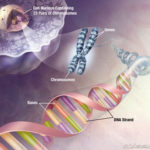Einan-Lifshitz, Adi MD; Mednick, Zale MD; Belkin, Avner MD; Sorkin, Nir MD; Alshaker, Sara MD; Boutin, Tanguy MD; Chan, Clara C. MD; Rootman, David S. MD.
Cornea: September 2019 — Volume 38 — Issue 9 — p 1077–1082
Abstract:
Purpose: To compare the outcomes of Descemet stripping automated endothelial keratoplasty (DSAEK) with Descemet membrane endothelial keratoplasty (DMEK) for the treatment of failed penetrating keratoplasty (PKP).
Methods: This is a retrospective chart review of patients with failed PKP, who underwent DMEK or DSAEK. The median follow-up time for both groups was 28 months (range 6–116 months). Data collection included demographic characteristics, number of previous corneal transplants, previous glaucoma surgeries, best-corrected visual acuity, endothelial cell density, graft detachment and rebubble rate, rejection episodes, and graft failure.
Results: Twenty-eight eyes in the DMEK group and 24 eyes in the DSAEK group were included in the analysis. Forty-three percent of eyes in the DMEK group and 50% of eyes in the DSAEK group had to be regrafted because of failure (P = 0.80). The most common reason for failure was persistent graft detachment (58%) in the DMEK group and secondary failure (58%) in the DSAEK group; hence, the time between endothelial keratoplasty and graft failure differed significantly between the groups (P = 0.02). Six eyes (21%) in the DMEK group and 7 eyes (29%) in the DSAEK group developed graft rejection (P = 0.39). Rejection was the cause of failure in 67% and 71% in the DMEK and DSAEK groups, respectively. The best-corrected visual acuity 6 months after surgery was better in the DMEK group compared with the DSAEK group (P = 0.051).
Conclusions: Both DSAEK and DMEK have a role in treating PKP failure. Primary failure due to persistent graft detachment was significantly higher in the DMEK group, although the overall failure rate in the medium term was similar.
Copyright © 2019 Wolters Kluwer Health, Inc. All rights reserved.












